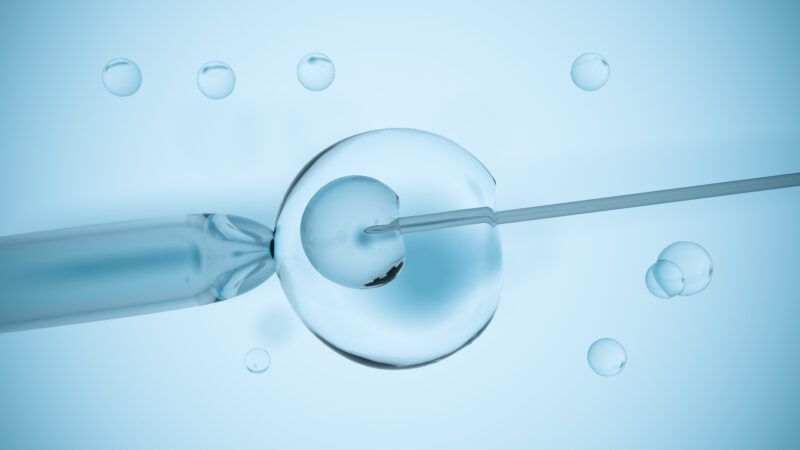3-Parent Babies Born Healthy in the U.K.
The FDA blocked a similar successful treatment for mitochondrial disease a quarter of century ago.

Eight healthy babies who have genes derived from three different parents have been born healthy in the United Kingdom. This happy result was reported in The New England Journal of Medicine. The treatment involved taking the nucleus from a fertilized egg that contained defective mitochondria and installing it into a donor egg with healthy mitochondria whose nucleus had been removed. Thus, the DNA comprising these babies' genes are derived from the mothers, fathers, and the egg donors. Mitochondrial DNA represents about 1 percent of total cellular DNA (about 1000 to 10,000 copies per cell). Mitochondria are the chief energy-producing organelles inside our bodies' cells. Mitochondrial disorders affect between 1 in 6,000 and 1 in 8,000 live births, making them almost as common as childhood cancer.
Many more families might have benefited over the past couple of decades from similar treatments pioneered a quarter of a century ago, except that handwringing bioethicists helped to persuade the U.S. Food and Drug Administration (FDA) to essentially ban them.
Back in 2001, fertility researcher Jacques Cohen and his colleagues at the Institute for Reproductive Medicine and Science at St. Barnabas Medical Center in New Jersey announced the births of 15 three-parent babies. In this case, the researchers injected mitochondria-containing cytoplasm taken from healthy donor eggs into those of women who were experiencing infertility.
Predictably, the usual dogmatically conservative claque of bioethicists decried the treatments. They asserted that deploying such treatments was "too important a step to be left to the consciences of individual researchers." Before being allowed to go forward, they demanded "public discussion" followed by "carefully regulated progress."
The bureaucrats at the U.S. Food and Drug Administration heeded the bioethicists' calls and issued a letter asserting the agency's jurisdiction over the treatment.
"We want to advise you that the Food and Drug Administration (FDA) has jurisdiction over human cells used in therapy involving the transfer of genetic material by means other than the union of gamete nuclei," wrote Kathryn C. Zoon, who was then the director of the FDA's Center for Biologics Evaluation and Research, in a July 6, 2001, letter. This stopped Cohen and his colleagues in their tracks.
In her 2018 Cardozo Law Review article, "How Subterranean Regulation Hinders Innovation in Assisted Reproductive Technology," William and Mary law professor Myrisha Lewis comprehensively demolishes the FDA's assertion of regulatory authority of cytoplasmic transfer and other fertility treatments.
"The FDA has been regulating cloning and advanced assisted reproductive technologies through letters for over twenty years, although it has never provided proof of jurisdiction," she concludes. "To regulate in a subterranean fashion can deter research and American patients' access to life-saving techniques." Yes, it can and it does.
How have the children born in 2001 using cytoplasmic transfer fared? Cohen and his colleagues contacted their parents in 2016 when all of the kids were now teenagers. Acknowledging the limitations of survey data, they reported that prenatal development and delivery were uneventful and that their school grades ranged from good to excellent. While one child experienced migraines and others had mild asthma, and some had minor vision and skin problems, the children overall were in good health. As Bionews summed it up: "'Three-person babies' grow up into healthy teenagers."
Had the FDA stayed out of the way, many more families would have had the opportunity to use these and similar assisted reproduction technologies to have healthy children over the past 25 years.
